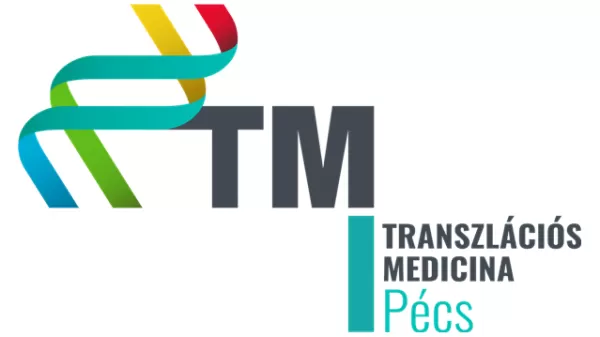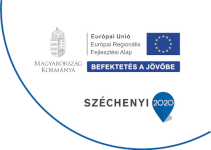
Pécs
Translational Medicine is a 21st century breakthrough in medicine that improves health prevention, speeds up disease diagnosis, improves the quality of patient care and last but not least makes healthcare more cost-effective, while creating the right environment for high-level clinical and basic research activities. In January 2016, the University of Pécs was the first in Hungary to innovatively enable this new system, undertaking the development and launch of a completely unique patient care, education and science module.
TM is composed of four elements (TM-BETERAGEMENT, TM-STUDY, TM-LESSON, TM-EDUCATION AND COMMUNICATION) and the supporting TM-INTERDISCIPLINARY unit. The issues and current challenges must always be born at the bedside. The answers to our questions must then be found in one or a combination of disciplines. The answers must then be further developed into coherent knowledge. This is evidence based medicine (EBM), the practical synthesis of which is the knowledge and guidelines for each disease (EBM guideline). The knowledge synthesised in EBM must be fed back to patients, patient care providers, insurance companies, business leaders, industry partners and policy makers through educational and illustrative materials.
TM-PATIENT CARE
One of the biggest barriers to quality and cost-effective patient care in Hungary is the significant lack of evidence-based medicine. Less than 5% of international guidelines are available in Hungarian, and a significant proportion of doctors use "individual" protocols, which are not cost-effective and lead to poorer outcomes. We have national data in the area of acute pancreatitis and in 2014 we produced an evidence-based recommendation. Every year, approximately 5050 patients are diagnosed in our country. From the analysis of data collected from 17 hospitals in the Acute Pancreatitis (AP) registry initiated and developed by our working group, we know that the EBM guidelines are followed in only half of the cases in AP care (EBM adherence=50%). If we could reach 100%, we could reduce costs by 25% (saving about 0.5 billion HUF) and save 116 lives per year. According to police data, there were 226 homicides in Hungary in 2017, so if we could achieve full EBM adherence in just two disease groups, we could save more lives than if the police reduced the number of homicides in Hungary to zero. An important task of the TM-STUDY units is to formulate scientific questions here, which are forwarded to TM-Science.
Three levels of progressivity of patient care are proposed.
- B1 - The patient care centre should provide centralised (single site) care for the disease in question. The centre should closely follow EBM care, which is monitored by the national centre. Data is entered into the registers by full-time administrators. Registries, clinical trials are run.
- B2 - B1 + A physician and/or physician-PhD student from the TM-UNIVERSITY centre also assists the patient care unit.
- B3 - (B1 + B2) and run their own registry and/or clinical trial.
TM-SCIENCE
An important challenge of the 21st century is to make scientific results as useful as possible. Questions from the TM-STUDY can be answered by basic, applied and clinical research methods in TM-Science. This process would involve close collaboration between academic and university research teams. The development of TM-Patient care and TM-Science would be a huge attraction for pharmaceutical companies, and its development could bring tens of billions of euros to Hungary. The results of TM-Science would also represent a major scientific advance in terms of the quality and quantity of scientific publications. The existing tendering systems could increase the salaries of health care workers on a qualitative basis through funding from science (e.g. the New National Research Agenda tenders), which would reduce the dependence on parasolvency and offer an alternative to the draining effect of private health care.
Science (S) would operate in four coordinated areas:
- S1 - basic research.
- S2 - applied research. In collaboration between pharmaceutical companies and patient care centres
- S3 - clinical research. In collaboration between universities and patient care centres
- S4 - mixed research At universities where S1-3 is available
TM-KNOWLEDGE
One of the biggest obstacles to quality improvement is that scientific results are not fed back to the bedside, i.e. they are not used in patient care. A serious shortcoming is the lack of synthesis of scientific results. Every day, more than 10,000 new peer-reviewed scientific publications appear on PUB MED which are stalled for lack of a summary. Only in pancreatic diseases have all international EBM guidelines been translated into Hungarian.
In the summary of knowledge (T) the following areas should be improved:
- T1 - discuscitations,
- T2 - systematic reviews
- T3 - textbooks (publications of national working groups in the field)
- T4 - systematic summary publications (publications of university centres)
- T5 - EBM guidelines (publications of national working groups in the field)
- T6 - TM- Development of local protocols for patient care units (would be developed individually in each patient care unit)
T1-2, T4 would significantly increase our international publication output.
TM-COMMUNICATION
Of course, it is not enough to summarise knowledge, but it must also be communicated back to the individual participants in the field. Knowledge can only become useful if the latest knowledge is incorporated into the education of medical staff (in current medical education, a significant proportion of lecturers work with 10-20 years of teaching material and pass on their individual experience to students rather than the material of knowledge. The qualitative and economic outcomes of these are significantly worse than these outcomes of TM-Knowledge. In addition to doctors and professional staff, patients must of course be involved in education. Evidence-based educational and information materials for policy makers, insurers and pharmaceutical companies should also be produced.
The education/information (O) routes should be taken forward to the following target groups:
- O1 - physicians, professionals
- O2 - patients
- O3 - interdisciplinary groups (see next point)
- O4 - decision makers (policy, insurers)
- O5 - pharmaceutical companies
- O6 - students, university education
TM-INTERDISCIPLINARY UNIT
For TM patient care, TM science, TM knowledge, TM education and TM communication to work effectively, it is essential that there is a closely coordinated interdisciplinary working relationship between the disciplines that support each other and work closely together. Informaticians are essential in multicentre registry and clinical trial development, biostatisticians in data collection planning, analysis of incoming data (our operational registries currently contain more than 2.6 million records). Clinical research administrators, who assist patient enrolment and upload data, and data quality monitors (data verifiers) are important participants in data management. Today, it is not enough to have large amounts of data, quality is also essential to draw accurate conclusions. Health economists can model and provide accurate data and calculations to support the cost-effectiveness of system operation and interventions. Getting information to the public is also essential to increase prevention, and the communication team will help in this. The Medical Management Expert Group provides the essential background for the design and implementation of registries, meta-analyses and clinical trials. An interdisciplinary centre is needed to carry out TM interdisciplinary tasks, as well as smaller interdisciplinary groups established per university.
The interdisciplinary group would consist of the following groups.
- I1 - informatics
- I2 - biostatistics
- I3 - physician management
- I4 - data and patient coordination
- I5 - health economics
- I6 - communication
- I7 - event coordination
- I8 - human policy (HR) group
The latter two groups are essential for country development.
Overall, only a combination of these five units can lead to comprehensive and spectacular success in patient care, science and education.
